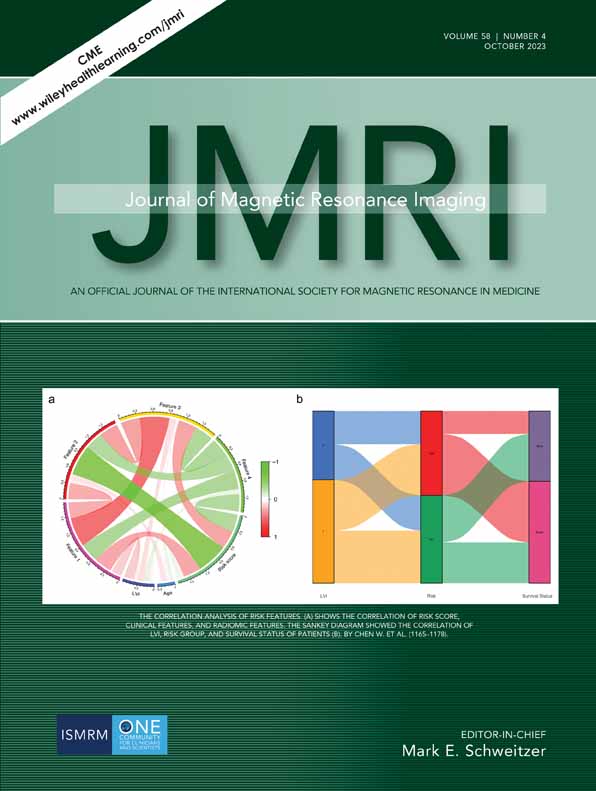An Integrated Algorithm for Differentiating Hypertrophic Cardiomyopathy From Hypertensive Heart Disease
Abstract
Background
Differentiating hypertrophic cardiomyopathy (HCM) from hypertensive heart disease (HHD) is challenging.
Purpose
To identify differences between HCM and HHD on a patient basis using MRI.
Study Type
Retrospective.
Population
A total of 219 subjects, 148 in phase I (baseline data and algorithm development: 75 HCM, 33 HHD, and 40 controls) and 71 in phase II (algorithm validation: 56 HCM and 15 HHD).
Field Strength/Sequence
Contrast-enhanced inversion-prepared gradient echo and cine-balanced steady-state free precession sequences at 3.0 T.
Assessment
MRI parameters assessed included left ventricular (LV) ejection fraction (LVEF), LV end systolic and end diastolic volumes (LVESV and LVEDV), mean maximum LV wall thickness (MLVWT), LV global longitudinal and circumferential strain (GRS, GLS, and GCS), and native T1. Parameters, which were significantly different between HCM and HHD in univariable analysis, were entered into a principal component analysis (PCA). The selected components were then introduced into a multivariable regression analysis to model an integrated algorithm (IntA) for screening the two disorders. IntA performance was assessed for patients with and without LGE in phase I (development) and phase II (validation).
Statistical Tests
Univariable regression, PCA, receiver operating curve (ROC) analysis. A P value <0.05 was considered statistically significant.
Results
Derived IntA formulation included LVEF, LVESV, LVEDV, MLVWT, and GCS. In LGE-positive subjects in phase l, the cutoff point of IntA ≥81 indicated HCM (83% sensitivity and 91% specificity), with the area under the ROC curve (AUC) of 0.900. In LGE-negative subjects, a higher possibility of HCM was indicated by a cutoff point of IntA ≥84 (100% sensitivity and 82% specificity), with an AUC of 0.947. Validation of IntA in phase II resulted in an AUC of 0.846 in LGE-negative subjects and 0.857 in LGE-positive subjects.
Data Conclusion
A per-patient-based IntA algorithm for differentiating HCM and HHD was generated from MRI data and incorporated FT, LGE and morphologic parameters.
Evidence Level
3.
Technical Efficacy
Stage 2.




